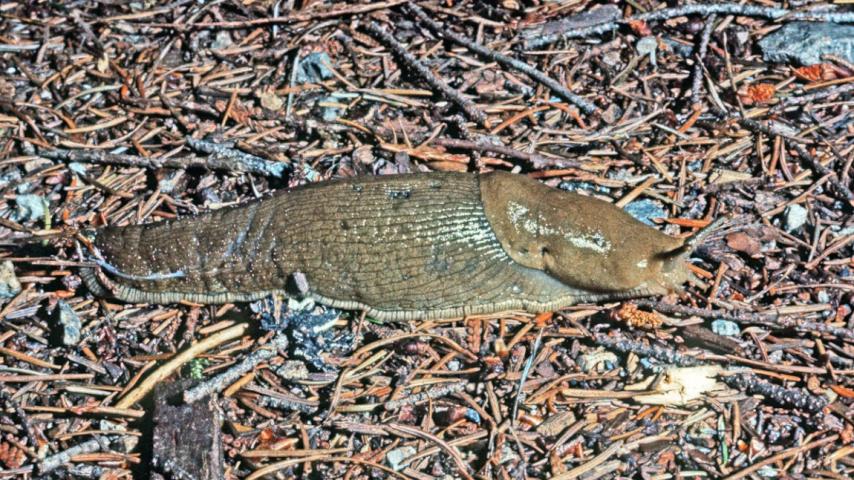Banana Slug (Ariolimax columbianus)
The largest slug in North America (up to 20 cm, rarely more), perhaps the second largest slug in the world, Banana Slugs are a special feature of our region.

KINGDOM Animalia - PHYLUM Mollusca - CLASS Gastropoda - ORDER Stylommatophora - FAMILY Arionidae
They are restricted to the wet Pacific Northwest coastal lowlands, from British Columbia to central California. A smaller, paler subspecies occurs locally in southern California.
Although non-native slugs are the bane of the gardener, Banana Slugs remain mostly out in the forest. Their optimal habitat is the floor of a wet, cool forest, where neither heat nor drought is a problem for these thin-skinned mollusks. With no shell in which to retreat, they are very sensitive to death by desiccation. Because of this, they are more likely to be active at night, but they are also out and about on cool, moist days.
Slugs exhibit a very effective mode of locomotion. The pedal gland, on the bottom of the foot, produces mucus that the slug slides over, leaving an obvious shiny trail. Muscles in the foot contract in waves, pushing the animal forward at a not exactly blinding speed of 10 m/hr. At this rate, a slug race is a very relaxed event.
Slugs are mostly herbivores, and Banana Slugs eat just about any kind of plant (leaves, stems, roots, flowers, seeds, and fruit), even Poison Oak, left alone by most animals. They also eat fungi of all kinds but are not averse to including animal feces and carcasses In that broad diet.
Banana Slugs have some persistent and effective predators, including Pacific Giant Salamanders and Northwestern Garter Snakes. These animals need to be able to cope with the slug’s mucus, produced in copious amounts when threatened by predation. Snakes have been found with their mouth stuck shut by slug mucus.
Slug mating is surely one of the most interesting aspects of their life story. Slugs are hermaphrodites, both sexes in the same animal. They can mate with themselves but apparently prefer to find another slug, assuring genetic mixing. When two slugs meet, they spend a surprisingly long time in what could only be called courtship behavior, twining around each other and nipping on each other’s body. They may make sudden lunges or swipe at each other with their tail, perhaps the quickest of slug movements.
After a while, the copulatory organs of both individuals are extruded from the body, and they may be waved around, as in display. They make impressive displays, in some kinds of slugs almost as long as the body. Finally each organ is inserted in the body of the other individual, and sperm transfer takes place.
After this act is completed, the slugs appear to have great difficulty withdrawing the organ, and they writhe around as they try to pull apart. If they are unable to do so, one or both will finally start chewing and bite off the organ of the other slug. This behavior is called apophallation and seems unique to slugs.